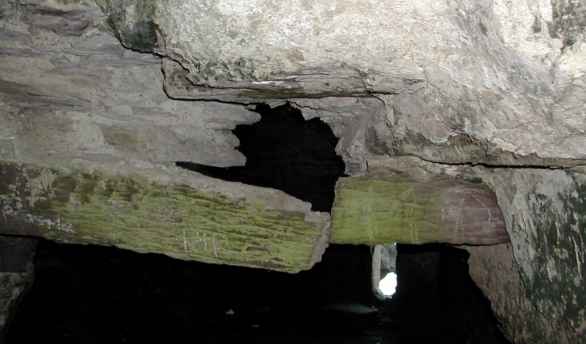What The Experts
had to Say
- "This Castle is a remarkable structure, and deserves sensitive
conservation and repair. Its setting, in the middle of the river,
with its attendant stone bridge, produces an effect of outstanding
beauty and sublimity."
- "The castle
was constructed in three distinct phases, dating roughly to the fifteenth,
sixteenth and seventeenth centuries. It has been roofless and ruined
since at least the last quarter of the eighteenth century."
- "The adjacent stone bridge probably dates from the seventeenth
century and its southern half was rebuilt in the middle of the nineteenth
century, after severe flood damage".
- "The current dangerous condition of the masonry of the castle
requires immediate attention to prevent serious injury from falling
stones".
- "Reinstatement of the roof or internal floors should not
be contemplated, since the castle has been ruinous for over two centuries".
- "Enhanced access and movement within the castle could, however,
be achieved with the careful insertion of a finely detailed stairway
and viewing platforms to allow visitors to reach the wall walk level"
- "Riverside trails could be developed from which to view
the castle from riverbanks"
.
- "The scope of works is complex, if not extensive. We would
recommend that you seek expert advice from an architect and engineer
with conservation experience to specify, detail and oversee the repair
programme".
- "The challenge in conserving Carrigadrohid is to improve
public safety and accessibility,
without compromising the important historic and aesthetic qualities
derived from its ruination"
- "Any conservation works require a light and experienced
hand."
|
Recommended
course of action:
"Cracks
to west and east walls should be left as they are. However, if access
were provided for other works, it would make sense to secure all
loose stones and to install permanent markers showing the extent
of cracking at the current time. Such markers will allow future
caretakers of the structure to measure the rate and extent of any
future movement
-
Weather
action dislodging stones to the underside and sides of openings,
particularly where the lintel has already rotted or been removed.
-
Water
penetration into the tops of walls and ledges leading to erosion
of the mortar and eventual loosening of stones.
-
Plant
root action dislodging mortar from joints and prising away stones.
-
River
action scouring the mortar and then stones from the base of the
walls.
-
Significant
local damage requiring immediate action
-
It
is impossible to detail all of the instances where the above processes
are taking place. Virtually every section of wall is experiencing
some extent of erosion. It is probably most useful to highlight
the two areas which are causing the most immediate concern.
-
The
opening at ground floor to the cross wall in the north annexe has
suffered badly from stone falls and, if not arrested as soon as
possible, will result in the fall of a large section of masonry.
-
The
cracked lintel to this opening should be propped immediately as
it is extremely dangerous".
(This
Committee has notified Cork County Council, The ESB and Dúchas of this
danger, both to the people who use the Bridge and to those who swim
in the river.)
|

